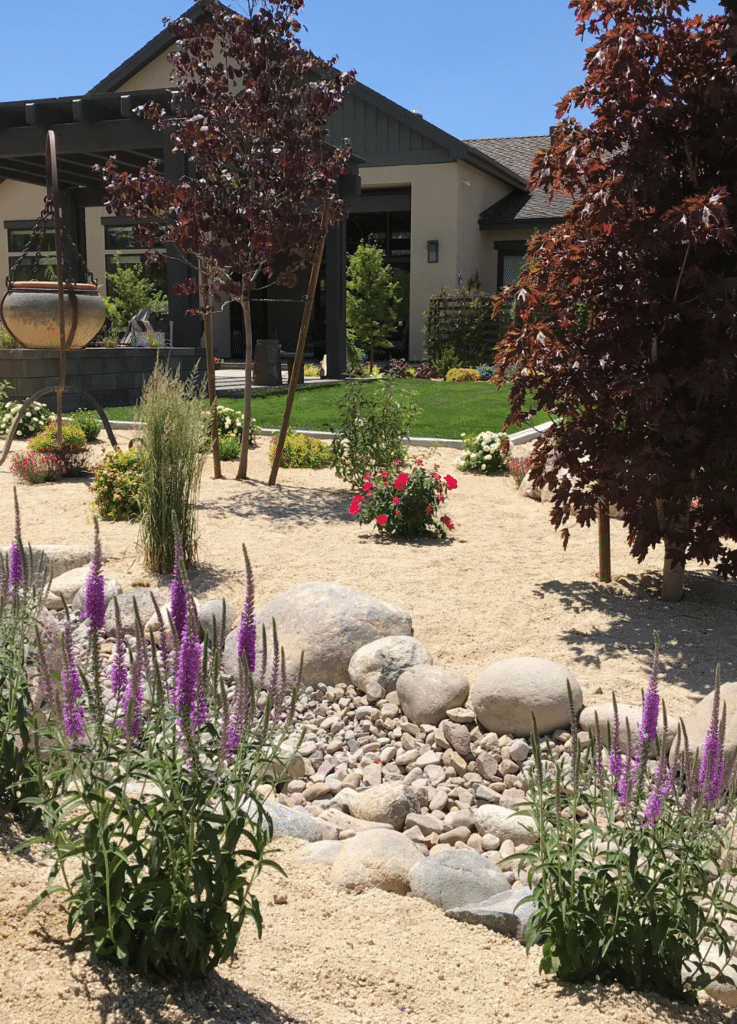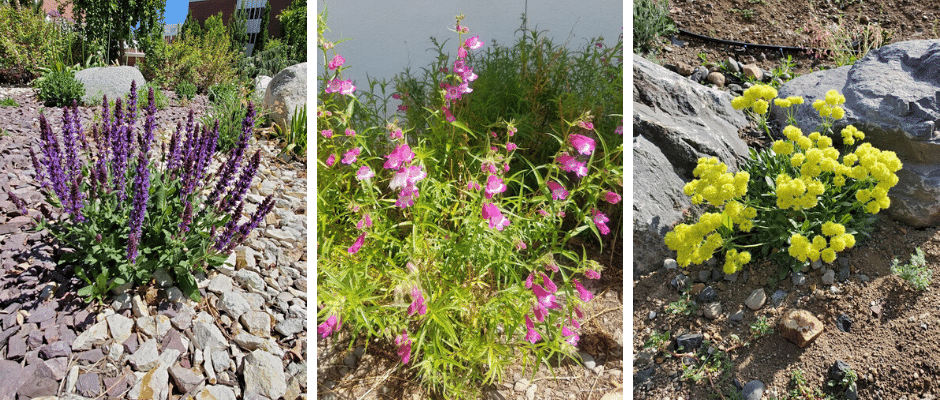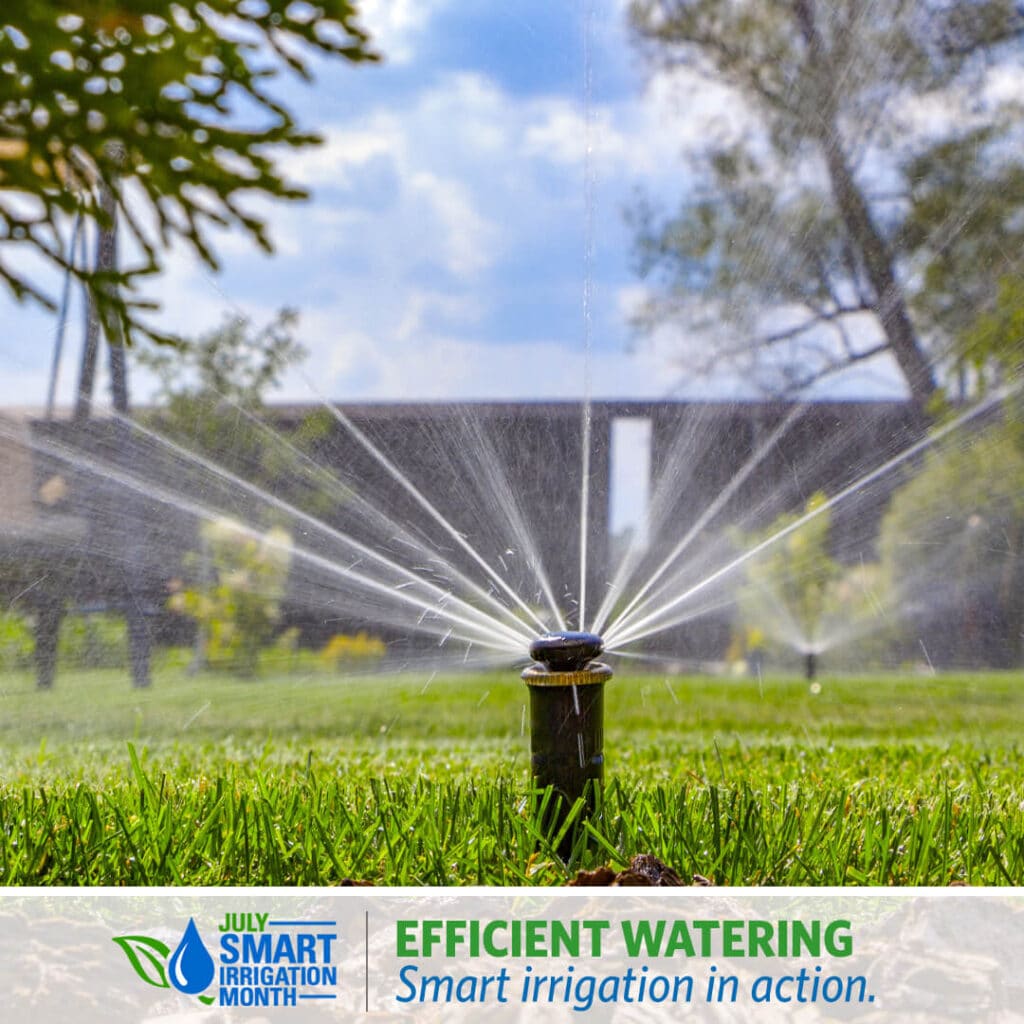We are in our third week of Smart Irrigation Month. Not familiar with Smart Irrigation Month? “Smart Irrigation Month is an Irrigation Association initiative celebrated throughout July to promote the social, economic and environmental benefits of efficient irrigation technologies, products and services in landscape, turf and agricultural irrigation.” Learn more.

You may have heard this hot word, sustainable, in reference to business, manufacturing and energy, but it has also entered the green industry. Sustainable by its definition at Dictionary.com means “the quality of not being harmful to the environment or depleting natural resources, and thereby supporting long-term ecological balance.”
What is sustainable landscaping?
Sustainable landscaping as defined by the QWEL curriculum is “an approach to landscape design, construction, and maintenance that encompasses ecologically sound practices.”
As opposed to traditional landscaping, sustainable landscapes are like mini watersheds where water stays on the landscape and is used to sustain plant and wildlife, ultimately conserving resources and cleaning storm water. This whole system’s approach to landscaping helps reduce water waste, limit harmful runoff and reduce water use overall.

What are elements I can incorporate for sustainable landscape design?
There are some simple steps you can take to make your landscape more sustainable. Incorporating one or two of these elements can greatly improve our environment and provide long-term ecological benefits.
Use Permeable Surfaces
To treat your landscape like a mini watershed, you want to reduce runoff and limit water waste. One way to do this is to install permeable surfaces as opposed to traditional hardscapes like concrete where water generally pools or along turfgrass edging.
For example, you might remove turf that runs directly next to concrete driveways and install a permeable surface or flower bed. This will reduce water waste from overhead sprinklers that would normally travel into storm drains.
Permeable surfaces might include permeable pavers, planter beds, or mulched areas.

Selecting Native or Climate-Adapted Plants
Plant selection is crucial to sustainable landscape design. By using native or climate-adapted plants in your landscape, you can reduce your landscape water use. Many native plants require much less water than more traditional plant material like annual flowers and turfgrass. Native plants also encourage native pollinators and provide habitat for animals.
There are many native plants that are beautiful in the sustainable landscape, especially xeriscaping. Here’s a short list of native flowering perennials to inspire you:
- Salvia
- Penstemon species
- Sulfur-flowered buckwheat (Eriogonum)
- Columbine (Aquilegia)
- Blanketflower (Gaillardia)
- Sundancer daisy (Hymenoxys acaulis)
- Blue flax (Linum lewisii)
- Four o’clock (Mirabilis)
- Phlox
- Globemallow (Sphaeralcea)

Limit turfgrass to functional areas
Studies have shown that reducing the area of turfgrass to a functional size can greatly reduce water use. Many of us like our lawn for playing with our children or pets or as a cooling mechanism for our homes during the hot summer months. We don’t want our beautiful lawns gone, but we also don’t want the high water bill that often comes in July.
The best way to reduce your water bill is to reduce the size of your turf area. You may not need lawn in your front yard, but still enjoy it in your backyard. Or you may have only lawn in the back and could reduce its size and replace it with planter beds, other low water use ground covers, or mulch.
Use organic mulch to support healthy soils
Healthy soils are necessary for healthy ecosystems. By adding organic mulch, such as shredded bark, leaves or grass clippings, you are slowing adding organic matter to the soil supporting soil life and plant material.
Mulch also reduces erosion, moderates soil temperatures, reduces soil compaction, improves soil structure, retains soil moisture, and can reduce weed germination.
In planter beds or open areas of soil, try laying 2-4 inches of organic mulch to promote landscape sustainability.

Improve irrigation components to increase water efficiency
Did you know 70% of your water is used outdoors? That means your landscape is a great place to reduce water use and improve water efficiency.
There are many ways you can improve your irrigation system to reduce water waste and lower your water bill. You can learn more in our previous blog article on saving water with your irrigation system.
With these five sustainable landscape tips, you will be on your way to a more sustainable future. Need help installing a new sustainable landscape? Give us a call at 775-852-8952 and our landscape designers can help you create the sustainable landscape of your dreams!